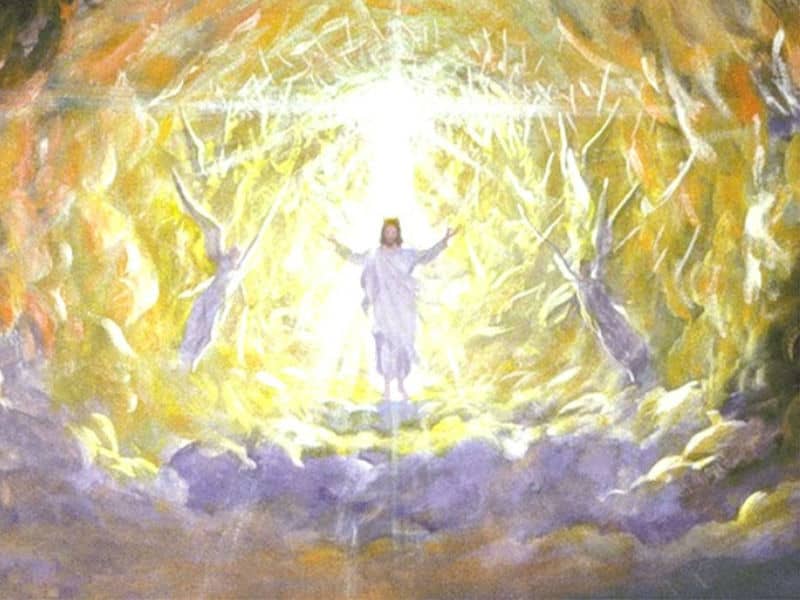People stared at her on the street, mildly repulsed by her squat figure, slanting eyes, and wide forehead, as though trisomy 21 were somehow self-willed, a bad or at least unfortunate choice she had made for herself while still in the womb. Her mother laughed and played, taught and prayed, with this only child, to the point where Masha could say her prayers and converse fluently in her native Russian and in the French. Masha also learned to pray in German. And when my wife and I visited her family, she greeted us in English, with a big, satisfied grin. Extraordinary for a Down's syndrome person. But Masha herself was extraordinary, simply because she was deeply loved and blessed with exceptional care and understanding.
I first caught sight of Masha in the Russian Orthodox church of St. Sergius, located in Paris' 19th arrondissement, then a poor working quarter of the city. The old wooden church, purchased by emigres from the days of the October Revolution, was adorned from floor to ceiling with magnificent sacred images depicting the whole of salvation history. It was Holy Friday, and people milled around before the afternoon Vespers service, lighting candles, venerating icons, and whispering quietly to one another. The sense of anticipation was palpable.
A few minutes later, the service ushered us into the awesome mystery of the crucified God. Ancient Slavonic hymns resonated throughout the church with power and poignant beauty. Finally, the central Royal Doors of the iconostasis opened. The priest and several laymen, with the intensity of the moment etched on their faces, came forward carrying the "epitaphion," or large image of the crucified Lord, wrapped in the shroud of a dead man. Their solemn procession brought them to the center of the church, where, before a large wooden cross, they laid the image on a low table, placed a Bible and a cross upon it, and heaped it high with flowers. All the while, the choir repeatedly sang the traditional and magnificent hymn known as "The Noble Joseph," commemorating the actions by which this converted Pharisee took Jesus' body down from the cross, anointed it with precious oils, wrapped it in fine linen, and laid it in a tomb.
At the close of the service, the faithful, packed into every corner of the church, came forward to venerate the image of Christ. At some point, Masha appeared. As on every Holy Friday, she was dressed entirely in black. Her face was streaked with tears, her head was bowed, and her arms hung down at her sides. As she approached the shroud, she slowly made the sign of the cross three times, prostrated herself before it, and for a moment kept her head to the floor. Then she rose, kissed the face then the feet of Christ, and finally she venerated the Bible and the cross.
I watched others as they watched her. Most of the people there knew her well. They knew that every Holy Friday, she lived the tragic mystery of the Passion as most of us never can. She walked with Christ, she conversed with Him. She was present with Him-and He with her-just like the women who sat opposite the tomb, shedding anguished tears and hoping for a miracle.
Those people knew, too, that the following evening, Masha would also exult in the glory of Christ's Resurrection. With the myrrh-bearing women, she would come to the tomb, discover it empty, encounter the Risen One, and rejoice beyond all rejoicing. For that parish community, Masha was one of the myrrh-bearers. She brought the truth and reality of the Resurrection to the heart and consciousness of anyone who took the time to look with wonder and thanksgiving at her unique way of sharing in and bearing witness to the Lord's death and Resurrection.
She incarnated the hymnography of the feast, and by doing so became what each of us is called to be: a living icon, a sacred image that reflects the boundless, self-giving love of God.Masha was a gift. And few in that community doubt that she intercedes for us now before the Throne of Grace.
Today, many years later, the Mashas of the world are disappearing. Their value is weighed according to different standards and found wanting. Through genetic screening, they are identified before birth, and many parents think the obvious solution is abortion. It's a true massacre of the innocents.
Some parents of Down's syndrome children, such as columnist George Will, champion their worth. The questions bear raising again: Do we really want a world where there are no Down's syndrome children? What immeasurable gift would we lose if we never saw a Masha in humble worship before the shroud of Christ?

